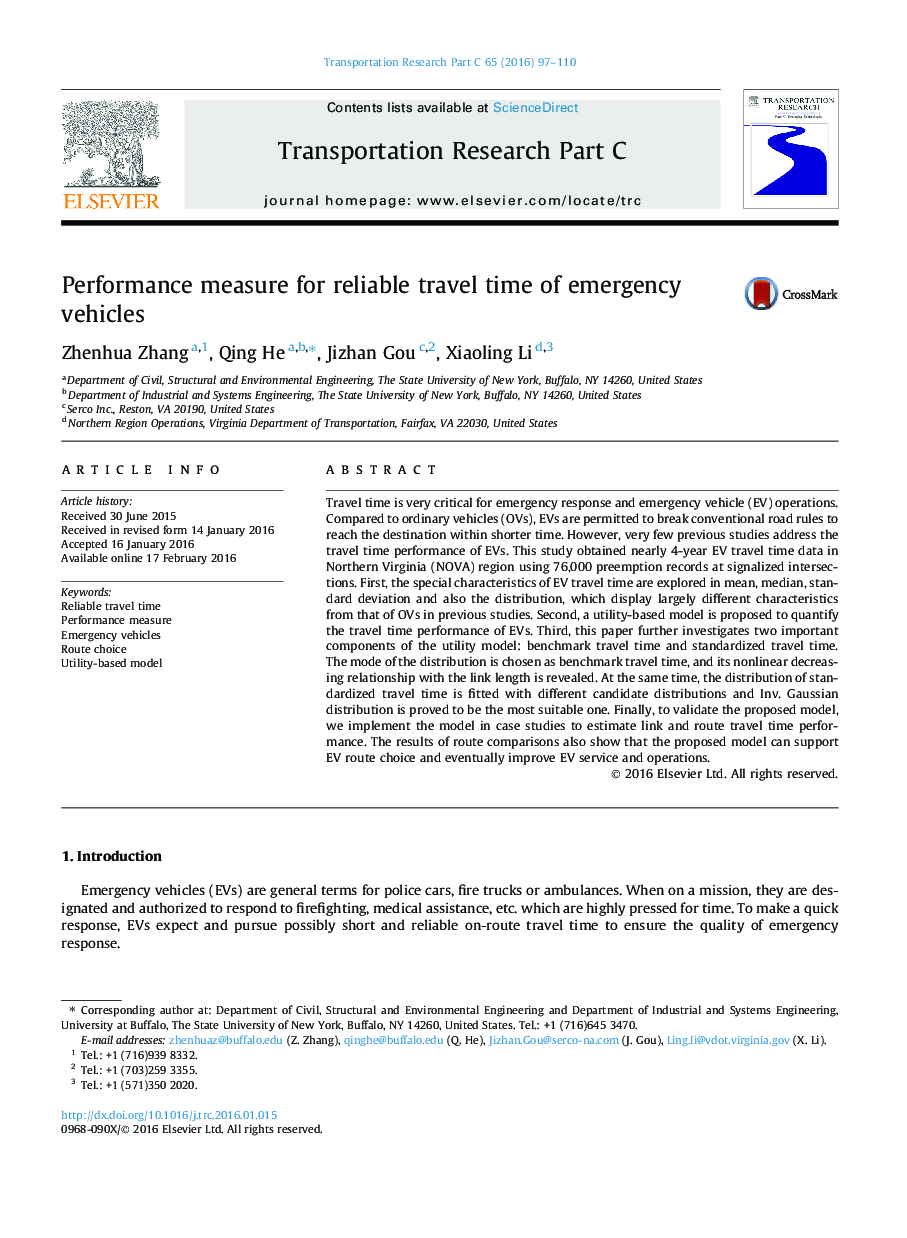| Article ID | Journal | Published Year | Pages | File Type |
|---|---|---|---|---|
| 6936497 | Transportation Research Part C: Emerging Technologies | 2016 | 14 Pages |
Abstract
Travel time is very critical for emergency response and emergency vehicle (EV) operations. Compared to ordinary vehicles (OVs), EVs are permitted to break conventional road rules to reach the destination within shorter time. However, very few previous studies address the travel time performance of EVs. This study obtained nearly 4-year EV travel time data in Northern Virginia (NOVA) region using 76,000 preemption records at signalized intersections. First, the special characteristics of EV travel time are explored in mean, median, standard deviation and also the distribution, which display largely different characteristics from that of OVs in previous studies. Second, a utility-based model is proposed to quantify the travel time performance of EVs. Third, this paper further investigates two important components of the utility model: benchmark travel time and standardized travel time. The mode of the distribution is chosen as benchmark travel time, and its nonlinear decreasing relationship with the link length is revealed. At the same time, the distribution of standardized travel time is fitted with different candidate distributions and Inv. Gaussian distribution is proved to be the most suitable one. Finally, to validate the proposed model, we implement the model in case studies to estimate link and route travel time performance. The results of route comparisons also show that the proposed model can support EV route choice and eventually improve EV service and operations.
Related Topics
Physical Sciences and Engineering
Computer Science
Computer Science Applications
Authors
Zhenhua Zhang, Qing He, Jizhan Gou, Xiaoling Li,
